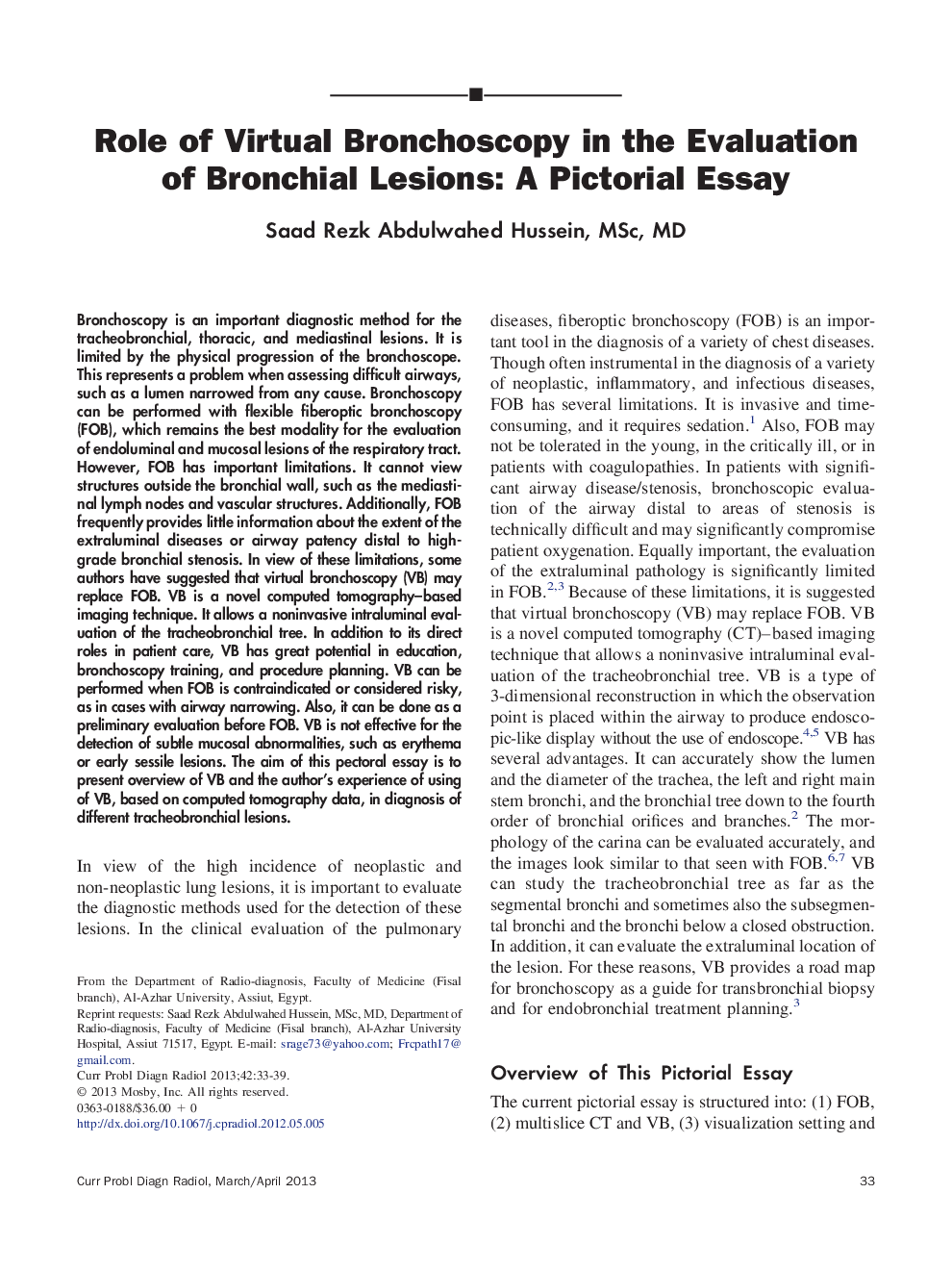| Article ID | Journal | Published Year | Pages | File Type |
|---|---|---|---|---|
| 4223500 | Current Problems in Diagnostic Radiology | 2013 | 7 Pages |
Bronchoscopy is an important diagnostic method for the tracheobronchial, thoracic, and mediastinal lesions. It is limited by the physical progression of the bronchoscope. This represents a problem when assessing difficult airways, such as a lumen narrowed from any cause. Bronchoscopy can be performed with flexible fiberoptic bronchoscopy (FOB), which remains the best modality for the evaluation of endoluminal and mucosal lesions of the respiratory tract. However, FOB has important limitations. It cannot view structures outside the bronchial wall, such as the mediastinal lymph nodes and vascular structures. Additionally, FOB frequently provides little information about the extent of the extraluminal diseases or airway patency distal to high-grade bronchial stenosis. In view of these limitations, some authors have suggested that virtual bronchoscopy (VB) may replace FOB. VB is a novel computed tomography–based imaging technique. It allows a noninvasive intraluminal evaluation of the tracheobronchial tree. In addition to its direct roles in patient care, VB has great potential in education, bronchoscopy training, and procedure planning. VB can be performed when FOB is contraindicated or considered risky, as in cases with airway narrowing. Also, it can be done as a preliminary evaluation before FOB. VB is not effective for the detection of subtle mucosal abnormalities, such as erythema or early sessile lesions. The aim of this pectoral essay is to present overview of VB and the author's experience of using of VB, based on computed tomography data, in diagnosis of different tracheobronchial lesions.
